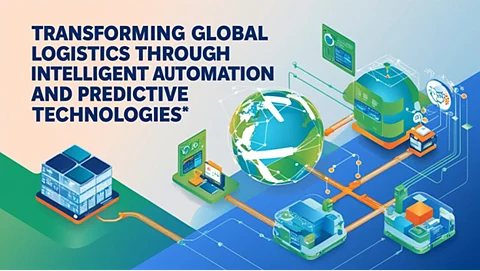

In the constantly changing landscape of supply chain operations, technology is transforming the way goods move, how inventory is tracked, and how disruptions are managed. Artificial intelligence is becoming a key driver of this change, allowing systems to be smarter, faster, and more robust. Among those at the forefront of examining the role of AI in logistics is Samuel Tatipamula, a technology researcher who specializes in next-generation use cases in inventory, routing, and exception handling.
As logistics networks grapple with increasing complexity, artificial intelligence (AI) emerges as a decisive tool in transforming traditional operations. AI’s ability to process massive volumes of real-time data enables unprecedented agility in supply chain decision-making. From predictive demand forecasting to dynamic route recalculations, these innovations redefine the operational backbone of logistics, not just improving performance metrics but reshaping entire workflows. This shift empowers organizations to operate with greater foresight, flexibility, and responsiveness in an unpredictable global market.
AI’s greatest strength in inventory management lies in its capacity for precise demand forecasting. Unlike traditional statistical models, machine learning algorithms analyze a broad array of inputs—market trends, seasonality, and even weather data—to anticipate future needs. With Gradient Boosting Decision Trees and Long Short-Term Memory networks, errors in forecasting are reduced by as much as 50%, allowing companies to strike the right balance of stock quantities with precision. This has resulted in excess inventory savings of 20–30%, greatly enhancing warehouse usage and capital utilization.
In addition to prediction, AI allows real-time dynamic inventory optimization for whole distribution networks. Organizations can eliminate overstocking without sacrificing service levels by recalibrating safety stocks in real time. Multi-objective optimization methods balance cost constraints and customer satisfaction, producing inventory policies that change as market dynamics change. Organizations using such systems achieve up to 25% inventory cost savings combined with tangible service reliability improvements.
AI has transformed route planning by integrating real-time traffic, weather, and operational limitations into routing algorithms. These systems adjust automatically to dynamic conditions, diverting shipments within seconds to prevent congestion or delays. In urban settings, this has resulted in up to 20% reductions in travel distance and 18% reduction in fuel consumption. Most importantly, contemporary AI routing engines handle more than 200,000 data points every minute, optimizing routes for delivery with an analysis depth well beyond human intellect.
The real genius of AI routing systems is the simultaneous consideration of many different factors. They take into account fuel consumption, vehicle capacity, driver schedules, and customer-specific needs like delivery windows and access restrictions. With these variables dynamically in balance, AI systems are capable of enhancing on-time delivery percentages by more than 20% and lowering driver overtime by almost the same percentage. The end result is a logistics system that accommodates not just efficiency but also regulatory conformity and client satisfaction.
Perhaps one of the most revolutionary uses of AI in logistics is its application in exception handling. Predictive software finds disruptions like delays or equipment breakdowns prior to their actual occurrence. With advanced milestone monitoring and weather forecasting integration, AI systems pick up on likely service breakdowns as much as 75 minutes in advance. Automated response frameworks proceed to suggest or take corrective measures, ranging from rerouting vehicles to alerting customers.
These systems have reduced response times to disruptions from 22 minutes to a mere 4.5, significantly increasing resilience. As a consequence, the logistics teams can transition from firefighting to proactive prevention of issues, providing smoother and more predictable operations.
The future of artificial intelligence in logistics is greater integration and technology convergence. Digital twins virtual copies of logistics networks are facilitating sophisticated scenario modeling, enhancing strategic planning and day-to-day decision-making. Self-driving delivery trucks and drones will remake the physical transport of goods, and blockchain technology will increase transparency among all supply chain parties. Even quantum computing is coming into view, with the potential to solve optimization problems at unthinkable velocities.
Together, these technologies are building the foundation for truly autonomous and self-repairing logistics environments. In summary, artificial intelligence integration in logistics is not a forecast any longer, but an essential strategy for operations fit for the future. Organizations embracing these new innovations are moving from reactive to predictive management and acquiring resilience and competitive advantage. These advances are not only enhancing performance but also reframing the position of technology in strategic decision-making. Samuel Tatipamula's work highlights the strategic necessity of using AI not only for its ability to improve operations but for constructing flexible, smart supply chains that will survive in a world of uncertainty.
